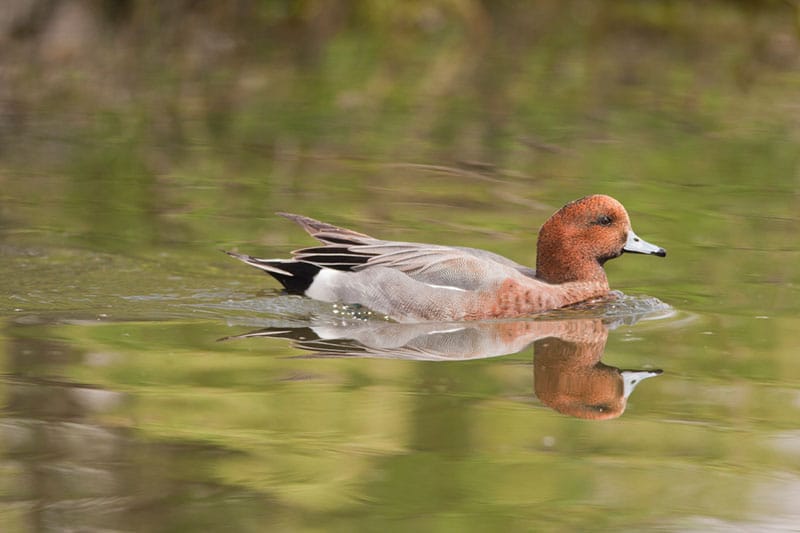Main Menu

Breeding pairs: 400 pairs
Wintering birds: 400,000
Family: Ducks, geese & swans
In breeding plumage, adult male wigeons have grey and white upperparts with a white patch on the upperwing. They have dark green speculums, bordered with black on each side. The primary wing feathers are grey-brown and the tertial feathers are grey, edged with white, while the outer webbing is black. The rump is white, and they have a black area surrounding the pale grey and white tail.
On the underparts, the upper breast and sides of the breast are pinkish grey, the lower breast and belly are white, and the flanks are vermiculated grey and white. The underwing coverts are white with brown mottling.
The head and neck are chestnut brown, with a creamy coloured crown. They sometimes have a metallic green spot behind the eye. The bill is light blue with a black tip, the eyes are dark brown. and the legs and feet are dark grey.
Out of breeding season, male wigeons have chestnut plumage with darker upperparts. The flanks are rust coloured and the dark area around the tail has black feathers edged with white.
Adult female wigeons can have grey or rust upperparts with a white belly. The underwing is fawn with lighter markings, the speculum is black, and the wing coverts are grey-brown. The bill, legs and feet are blue-grey.
Juvenile wigeons are similar to females but they have a mottled belly.
Try our interactive bird identifier
Wigeons breed between April and June. They are monogamous and form seasonal pair bonds. They nest in solitary pairs or small groups and produce one brood a season, but sometimes two if the first clutch is lost. The nest is built on the ground on tundra or in woodland and usually near water such as lakes, rivers, or wooded shores. It is a depression hidden under vegetation and lined with grass and a thick layer of down.
Wigeons lay 8-9 smooth, white or creamy-white eggs which are incubated by the female alone for 24-25 days. Ducklings are covered in pale brown down and have a grey bill, brown eyes, and olive legs and feet. They leave the nest son after hatching but remain with the female until they fledge at 40-45 days. They reach sexual maturity at 1 year.
Wigeon eat aquatic plants such as leaves, stems, roots, algae and seeds. In the summer they will also eat insects.

During winter large numbers of wigeon can be found by coasts all around the UK as well as anywhere where there is water. In the summer they can be found on breeding grounds in central and northern Scotland.
In the United States, Eurasian wigeons form large flocks with American wigeons and often hybridize.